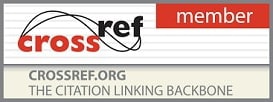P-ISSN: 2349-6800, E-ISSN: 2320-7078
Journal of Entomology and Zoology Studies
2016, Vol. 4, Issue 1
Ultra structural comparison of tongue in Apis cerana (Hymenoptera: Apidae): Plains and hill populations
Neelima R Kumar, Ruchi Sharma, Anudeep
Tongue of honey bees is modified for collecting nectar. Regarding their nutritional requirements, taste perception plays vital role in the life of honey bees. Honey bee biodiversity with respect to sensory structures on tongue can be analyzed by Scanning electron microscopy. This technique offers an advanced diagnostic tool to study honey bee biogeography and to determine adaptive variations to native flora. Mouth parts have been considered as an important morphological character for beneficial exploitation under the electron microscope. This aspect has, however, not been sufficiently exploited. In the present investigation, scanning electron microscopic studies on tongue of Apis cerana plains and hill populations have been performed and significant differences in the arrangement of spines in the middle region of tongue have been observed. It is therefore imperative that before intraspecific hybridization further complicates the scenario, modern taxonomic tests which can supplement the already existing information on honey bee biosystematics are exploited and the taxa placed on firm footing.
Pages : 84-87 | 1828 Views | 134 Downloads
How to cite this article:
Neelima R Kumar, Ruchi Sharma, Anudeep. Ultra structural comparison of tongue in Apis cerana (Hymenoptera: Apidae): Plains and hill populations. J Entomol Zool Stud 2016;4(1):84-87.
Related Journal Subscription
Important Publications Links
Important Links










